Japanese inspired tattoos have a fascinating history and hold significant cultural meaning. These tattoos are renowned for their intricate designs and deep symbolism, making them a popular choice among tattoo enthusiasts worldwide. The art of Japanese tattooing has gained immense popularity in recent years, captivating people with its unique blend of beauty and storytelling.
With roots dating back centuries, Japanese tattoo art carries a rich cultural significance. Each design tells a story, representing various aspects of life, culture, and personal beliefs. From the powerful imagery of waves symbolizing adaptability and strength to the menacing presence of oni demons embodying protection and fortune, Japanese inspired tattoos offer a visual expression that goes beyond mere aesthetics.
The exquisite form and attention to detail in Japanese tattoo designs make them truly remarkable works of art. Whether you’re drawn to the graceful elegance of cherry blossoms or the boldness of dragon motifs, these tattoos possess qualities that resonate with people from all walks of life.
Contents
- 1 Japanese Tattoo Designs
- 2 Best Japanese Tattoo Designs And Meanings
- 3 Japanese Dragon Tattoo
- 4 Japanese Sleeve Tattoo
- 5 Japanese Koi Tattoo
- 6 Japanese Cat Tattoo
- 7 Samurai Warrior
- 8 The Hidden Meanings of Japanese Tattoos
- 9 Frequently Asked Questions
- 10 Tattoos, Teenagers and Coming of Age: How Japanese Tattoos Mark Important Milestones
- 11 Infographic: Things To Discuss With The Artist Before Getting Your First Tattoo
- 12 Motifs & Subject Matter
- 13 Tools Used
- 14 Wrap Up!
- 15 Conclusion
- 16 FAQs
- 16.1 What are Japanese inspired tattoos?
- 16.2 Are Japanese inspired tattoos culturally appropriate?
- 16.3 Is it necessary to understand the symbolism behind Japanese inspired tattoos?
- 16.4 How should I choose a reputable tattoo artist for my Japanese inspired tattoo?
- 16.5 What aftercare steps should I follow for my newly inked Japanese inspired tattoo?
Japanese Tattoo Designs
Traditional Japanese Tattoos: Irezumi Meaning
Irezumi, the traditional term for full-body tattoos in Japan, holds a fascinating history. Initially, these tattoos were used as a form of punishment for criminals. However, over time, irezumi has evolved to become a symbol of strength, bravery, and devotion. Today, many people choose to adorn their bodies with these intricate and meaningful designs.
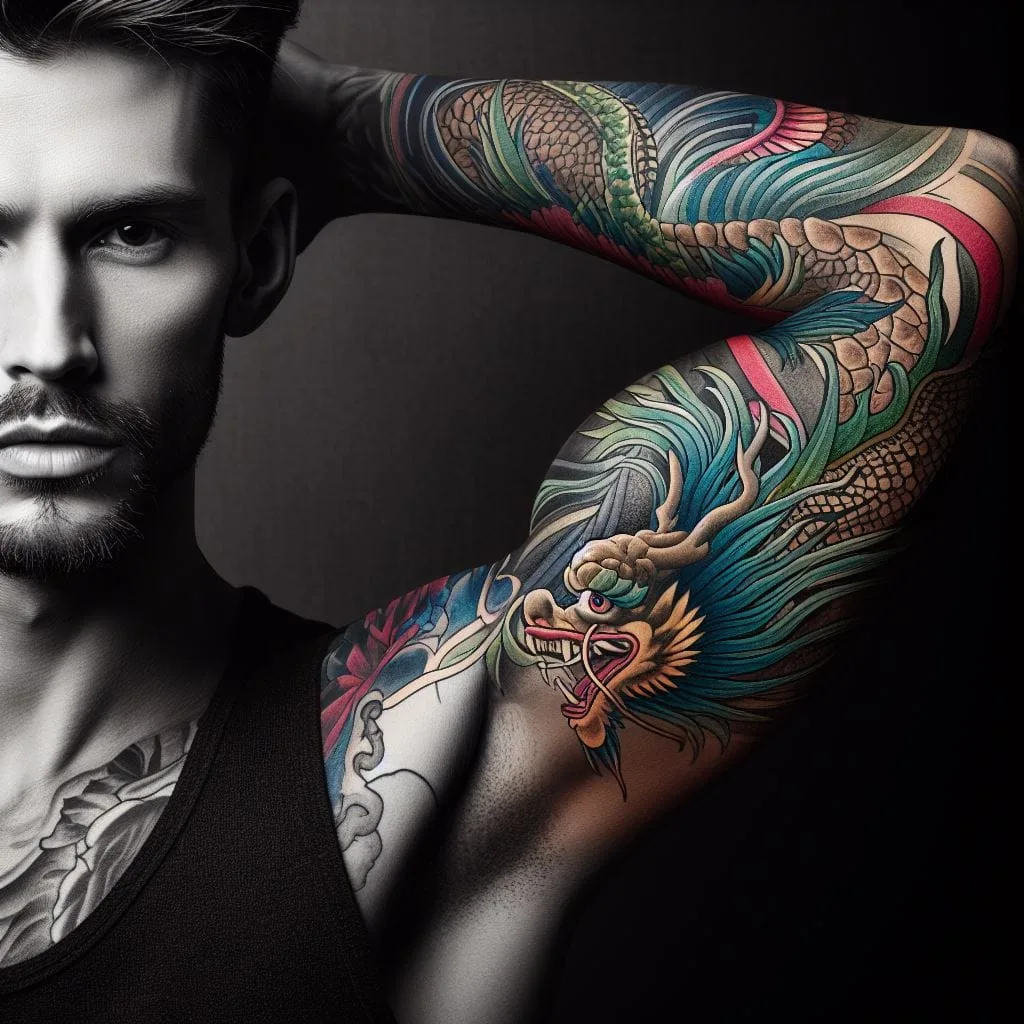
Prominent Japanese Tattoo Artists
There are several renowned artists who have mastered the craft:
- Horiyoshi III: This legendary artist is widely recognized for his exceptional skills in creating traditional Japanese tattoo designs. With decades of experience under his belt, Horiyoshi III’s work showcases incredible attention to detail and artistry.
- Shige: Another prominent figure in the world of Japanese tattooing is Shige. Known for his expertise in large-scale designs that span across the body, he creates breathtaking masterpieces that captivate the eye with their boldness and complexity.
- Horitomo: If you’re looking for unique and exquisite traditional Japanese-style cat tattoos, then Horitomo is your go-to artist. His specialization in this particular motif showcases his dedication to preserving the rich cultural heritage of Japanese tattooing.
What to Think About When Creating Your Own Japanese Tattoo Design
Designing your own perfect tattoo requires careful consideration and collaboration with a skilled artist who understands the intricacies of Japanese tattooing. Here are some factors to keep in mind:
- Placement: Think about where you want your tattoo to be located on your body. Consider areas that will enhance its visual impact and complement its design.
- Motifs and Symbols: Research different motifs and symbols that hold personal meaning to you.
Best Japanese Tattoo Designs And Meanings
Japanese-inspired tattoos are known for their intricate designs and rich symbolism. Each element carries a deep meaning, making these tattoos not only visually stunning but also culturally significant. Let’s explore some of the best Japanese tattoo designs and their meanings.
Cherry Blossoms: Beauty and Transience
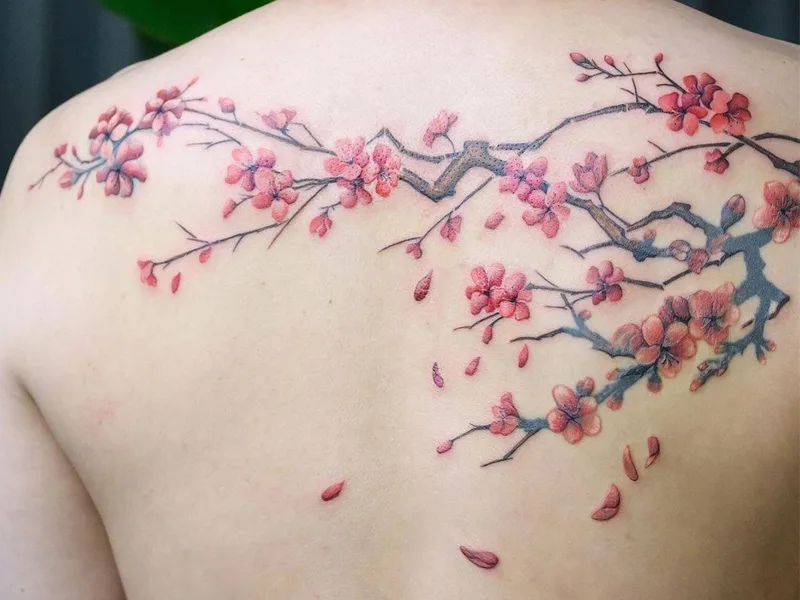
Cherry blossoms, or sakura, hold great significance in Japanese culture. These delicate flowers symbolize beauty, transience, and the fleeting nature of life. They serve as a reminder to appreciate the present moment and cherish the beauty that surrounds us. In Japanese folklore, cherry blossoms also represent renewal and rebirth.
The Phoenix: Overcoming Adversity
The phoenix is a mythical creature that holds immense symbolism in Japanese mythology. It represents rebirth, immortality, and overcoming adversity. The phoenix is believed to rise from its ashes after facing destruction or hardship, embodying resilience and strength. Getting a phoenix tattoo can serve as a reminder to persevere through challenges and emerge stronger on the other side.
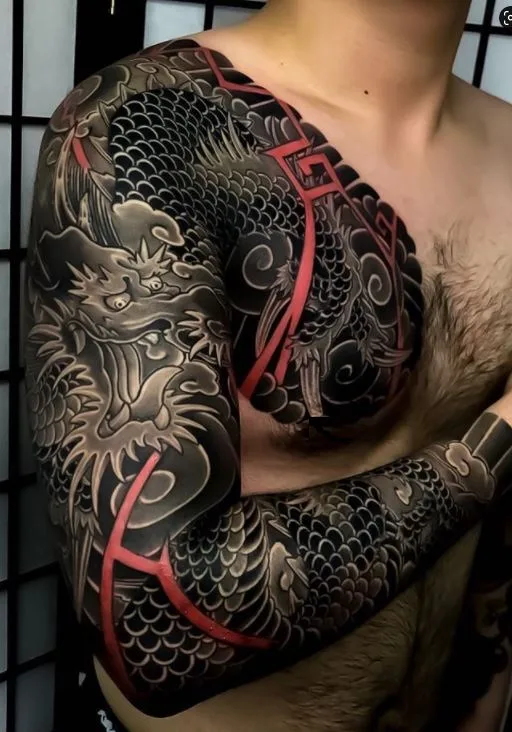
The Lotus Flower: Purity and Enlightenment
The lotus flower is another popular motif in Japanese tattoo designs. It holds deep spiritual significance across various cultures, including Japan. The lotus symbolizes purity, enlightenment, and spiritual growth. Just like the lotus rises above muddy waters to bloom beautifully, it represents our ability to overcome obstacles and find inner peace amidst chaos.
Koi Fish: Determination and Transformation
Koi fish tattoos are highly revered in Japanese culture for their symbolic meaning. These vibrant fish represent determination, perseverance, and transformation. According to legend, koi fish swim upstream against strong currents to reach the Dragon Gate at the top of a waterfall. Those who successfully make this journey transform into dragons—a powerful symbol of achievement.
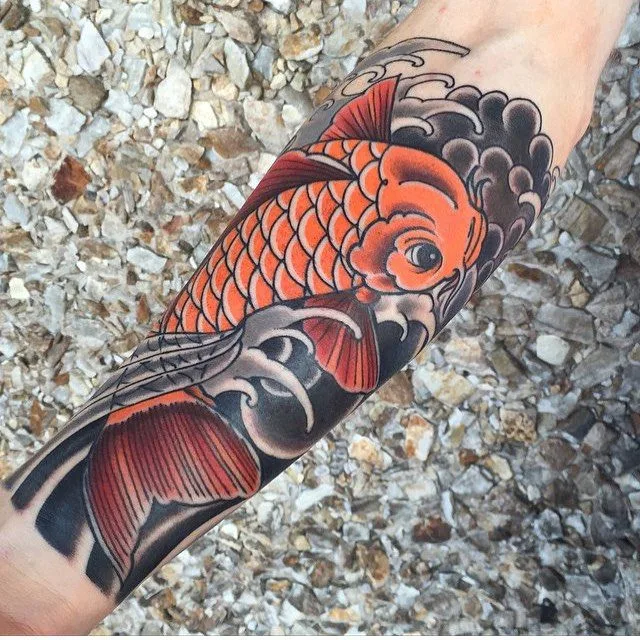
Japanese Dragon Tattoo
Dragons are revered creatures in Japanese culture, symbolizing power, strength, and wisdom. A Japanese dragon tattoo is not only visually striking but also carries significant meaning. These tattoos can be designed to represent protection or good fortune, making them popular choices among tattoo enthusiasts.
In traditional folklore, different colors of dragons hold various symbolic meanings. For instance, a red dragon represents passion and energy, while a gold dragon signifies wealth and prosperity. A black dragon is associated with mystery and transformation, while a blue dragon embodies tranquility and serenity. Each color choice allows individuals to express their unique personalities and aspirations through their tattoos.
One of the key aspects of Japanese-inspired dragon tattoos is the intricate detailing that goes into their design. From scales to claws to fiery breath, these tattoos capture the essence of these mythical creatures in stunning detail. The artistry involved in creating these tattoos requires skill and precision, resulting in breathtaking works of body art.
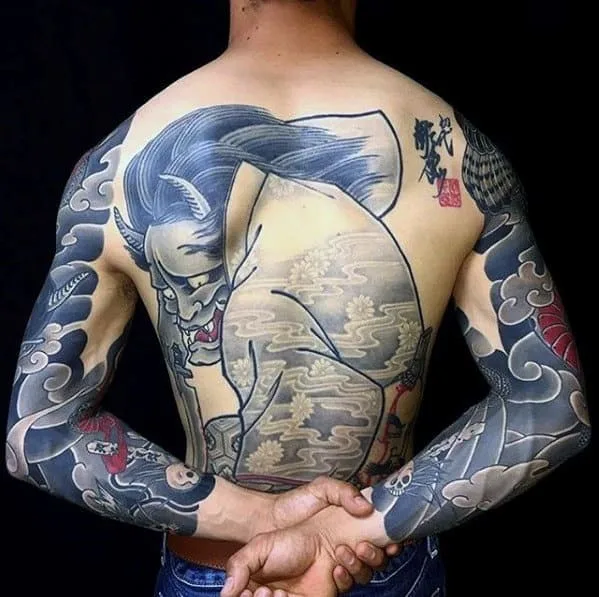
Japanese dragon tattoos often incorporate other elements from Japanese culture such as cherry blossoms or waves. Cherry blossoms symbolize beauty and transience while waves represent strength and resilience. Combining these elements with the powerful presence of a dragon creates a harmonious balance within the tattoo design.
Another fascinating aspect of Japanese-inspired dragon tattoos is their connection to traditional Irezumi (traditional Japanese tattooing). Irezumi has a rich history dating back centuries and incorporates various motifs inspired by nature, mythology, and folklore. By getting a Japanese dragon tattoo, individuals can pay homage to this ancient art form while embracing its timeless beauty.
Japanese-inspired dragon tattoos have gained popularity worldwide due to their captivating aesthetics and profound symbolism. Many people choose these designs not only for their visual appeal but also for the deeper meanings they carry. Whether it’s seeking protection or embodying personal strengths, these tattoos allow individuals to express themselves in an artistic yet meaningful way.
Japanese Sleeve Tattoo
Sleeve tattoos are a popular choice for those seeking to make a bold statement with their body art. These intricate designs cover the entire arm, from shoulder to wrist, offering ample space for storytelling through multiple interconnected motifs. Japanese-inspired sleeve tattoos, in particular, have gained significant popularity over the years.
Ample Space for Storytelling
One of the main reasons why people opt for Japanese sleeve tattoos is the vast canvas they provide. With such a large area to work with, artists can create elaborate and detailed designs that tell a story. From mythical creatures like dragons and phoenixes to symbolic elements like cherry blossoms and waves, these tattoos allow individuals to express their unique narratives.
Intricate Motifs
Japanese sleeve tattoos are known for their intricate motifs that showcase the rich cultural heritage of Japan. Elements such as koi fish symbolize perseverance and determination, while cherry blossoms represent beauty and transience. Samurai warriors often feature prominently in these designs, embodying strength, honor, and loyalty.
Symbolism and Meaning
Each element within a Japanese sleeve tattoo holds its own symbolism and meaning. For example, koi fish are associated with overcoming obstacles and achieving personal growth. Cherry blossoms represent the transient nature of life and serve as a reminder to appreciate every moment. By incorporating these symbols into their tattoo designs, individuals can convey deep emotions or personal journeys.
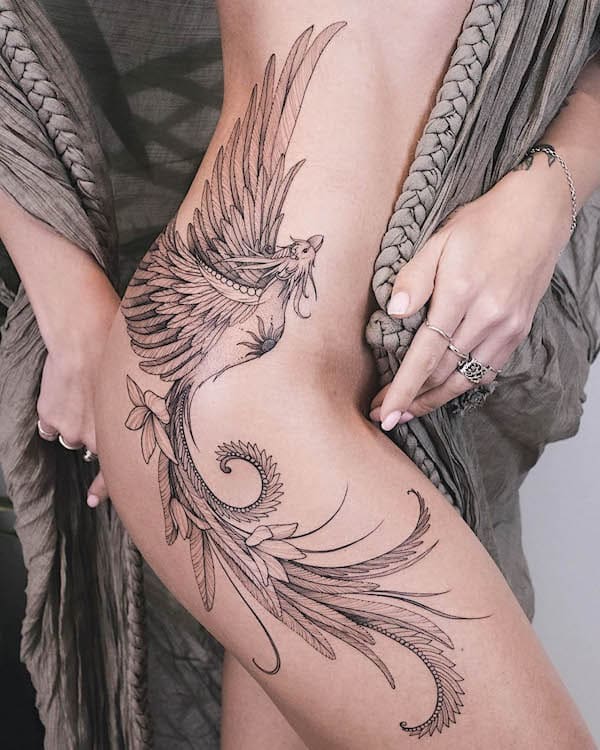
Aesthetic Appeal
Beyond their symbolic significance, Japanese sleeve tattoos are renowned for their aesthetic appeal. The combination of vibrant colors and intricate details creates visually stunning artwork that captivates both the wearer and onlookers alike. The flowing composition of interconnected motifs adds movement and dynamism to the overall design.
Cultural Appreciation
Choosing a Japanese-inspired sleeve tattoo also allows individuals to pay homage to Japan’s rich history and culture.
Japanese Koi Tattoo
The Japanese Koi fish tattoo is a popular choice for those seeking a meaningful and visually stunning design. The koi fish holds deep symbolism in Japanese culture, representing perseverance, determination, and the ability to overcome obstacles.
One fascinating aspect of the koi fish tattoo is that the direction in which the fish swims carries different symbolic meanings. When swimming upstream, it symbolizes strength and resilience in the face of adversity. It represents an individual’s ability to overcome challenges and achieve their goals against all odds.
On the other hand, when the koi fish swims downstream, it signifies that one has already achieved success or reached a state of tranquility. This direction represents going with the flow of life and embracing inner peace.
In terms of aesthetics, vibrant colors are often used to depict the beauty and strength of these magnificent creatures. The hues chosen for a koi fish tattoo can vary depending on personal preference and symbolism. For example, red is associated with love and passion, while black represents overcoming hardships.
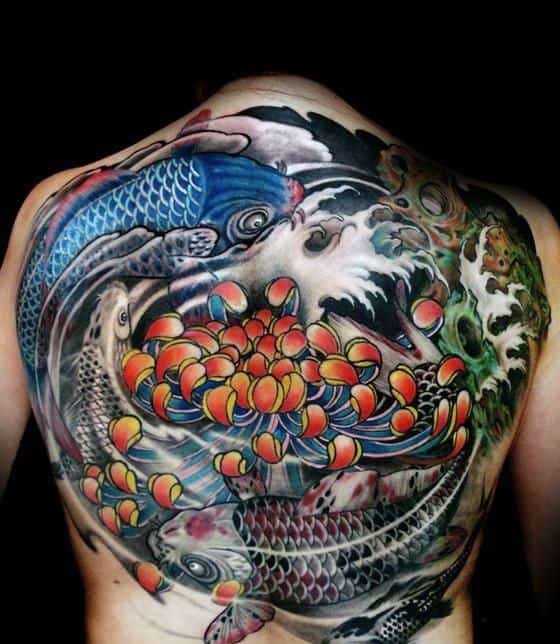
The incorporation of other elements into a koi fish tattoo can enhance its meaning further. One popular addition is the peony flower, which symbolizes wealth, prosperity, and honor in Japanese culture. Combining these two elements creates a harmonious representation of strength coupled with elegance.
When considering getting a koi fish tattoo inked on your body, it’s essential to choose an experienced artist who specializes in Japanese-inspired designs. They will have an understanding of the cultural significance behind these tattoos and ensure that every detail is executed with precision.
Remember that tattoos are permanent works of art; therefore, take your time researching different artists’ portfolios before making a decision. Look for examples showcasing their skill in capturing the intricate details of koi fish tattoos while maintaining balance and fluidity.
Furthermore, consider consulting with your chosen artist about customizing your design to make it unique to you.
Japanese Cat Tattoo
Cats, known as neko in Japanese folklore, hold a special place in Japanese culture and are often associated with various symbolic meanings. One of the most popular cat symbols is the Maneki-neko, also known as the beckoning cat. This iconic feline figure is believed to bring good luck and fortune to its owner.
In Japanese folklore, cats are considered protectors against evil spirits. They are believed to possess supernatural powers and can ward off negative energies. Many people choose to get a Japanese cat tattoo as a way to invoke this protective energy into their lives.
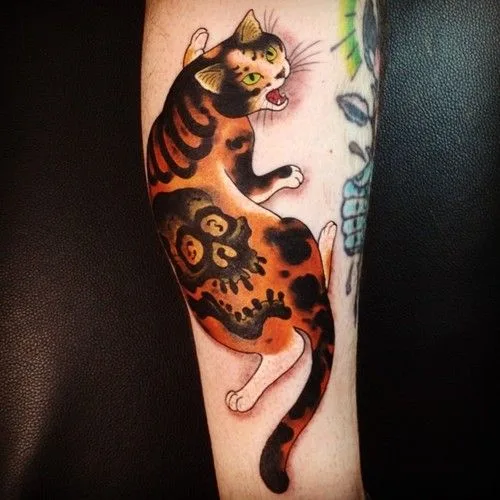
Cats as Protectors
Japanese mythology portrays cats as guardians against evil spirits and misfortune. It is believed that they have the ability to see things beyond human perception and can sense the presence of supernatural beings. In ancient times, people would keep cats in their homes or temples to keep evil at bay.
The Beckoning Cat
The Maneki-neko, or beckoning cat, is a common symbol found in many Japanese tattoos. It is depicted as a cat with one paw raised in a beckoning motion. This gesture is believed to invite good luck and fortune into one’s life.
The Maneki-neko comes in various colors, each representing different aspects of luck. For example, a white cat symbolizes purity and positive energy, while a black cat is associated with warding off evil spirits.
Symbolism behind Cat Tattoos
Cat tattoos can be designed to represent various traits or characteristics that resonate with an individual’s personality or beliefs. Some people may choose a cat tattoo to symbolize independence and self-reliance, as cats are known for their solitary nature.
Others may opt for a cat tattoo to embody mystery and enigma, as cats have been associated with secrets and hidden knowledge throughout history.
Samurai Warrior
Samurai warriors were highly respected figures in feudal Japan. These skilled fighters embodied qualities such as honor, loyalty, and courage. Tattoos depicting samurai warriors have become popular as a way to pay homage to these legendary warriors and showcase their values.
The designs of samurai warrior tattoos often feature intricate details of their armor, capturing the essence of their strength and resilience. The fierce expressions on their faces convey determination and fearlessness. These tattoos are typically done in a traditional Japanese style, utilizing bold lines and vibrant colors to bring the warrior to life on the skin.
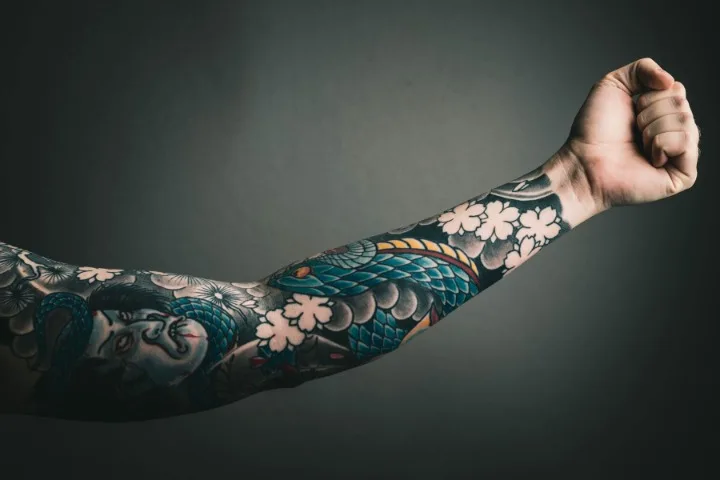
One common motif found in samurai warrior tattoos is the depiction of a solitary warrior standing tall with a katana, ready for battle. This symbolizes bravery and represents an unwavering commitment to protecting what is right. Other designs may show multiple warriors engaged in combat or scenes from historical battles, adding depth and storytelling elements to the tattoo.
In addition to the samurai warrior itself, other elements can be incorporated into these tattoos to enhance their meaning. For example, geisha, tigers, bamboo, or ukiyo-e (woodblock prints) can be included to represent different aspects of Japanese culture or personal symbolism.
When choosing a tattoo artist for your samurai warrior tattoo, it’s essential to find someone experienced in traditional Japanese-style tattoos. These artists have honed their skills in this specific art form and understand how to capture the essence of the samurai warrior accurately.
While some people choose to get a full back or chest piece featuring a large-scale depiction of a samurai warrior, others opt for smaller designs on specific body parts like arms or legs. Regardless of size or placement, these tattoos make powerful statements about one’s admiration for Japanese history and culture.
The Hidden Meanings of Japanese Tattoos
Japanese tattoos are not just beautiful works of art; they often hold deep, hidden meanings known only to the wearer. Symbolism plays a crucial role in conveying personal stories, beliefs, and values through these intricate designs. Let’s explore the fascinating world of Japanese tattoo symbolism and uncover the meanings behind them.
Meaningful Symbols
One of the most intriguing aspects of Japanese tattoos is the use of symbols to convey specific messages. Each element within a tattoo design carries its own significance, creating a visual narrative that reflects the wearer’s story or beliefs. For example, waves are commonly used in Japanese tattoos and can represent life’s ups and downs or resilience in the face of adversity. These undulating lines symbolize strength and adaptability, reminding us that we can ride out life’s challenges just as waves ebb and flow.
Nature’s Wisdom
Nature holds great importance in Japanese culture, and it is often reflected in their tattoo designs. Elements such as cherry blossoms, which symbolize beauty and transience, are frequently incorporated into tattoos. These delicate flowers serve as a reminder to appreciate life’s fleeting moments and embrace change gracefully. Similarly, animals like koi fish are popular choices due to their symbolic associations with perseverance and determination. The image of a koi swimming upstream represents overcoming obstacles and reaching one’s goals.
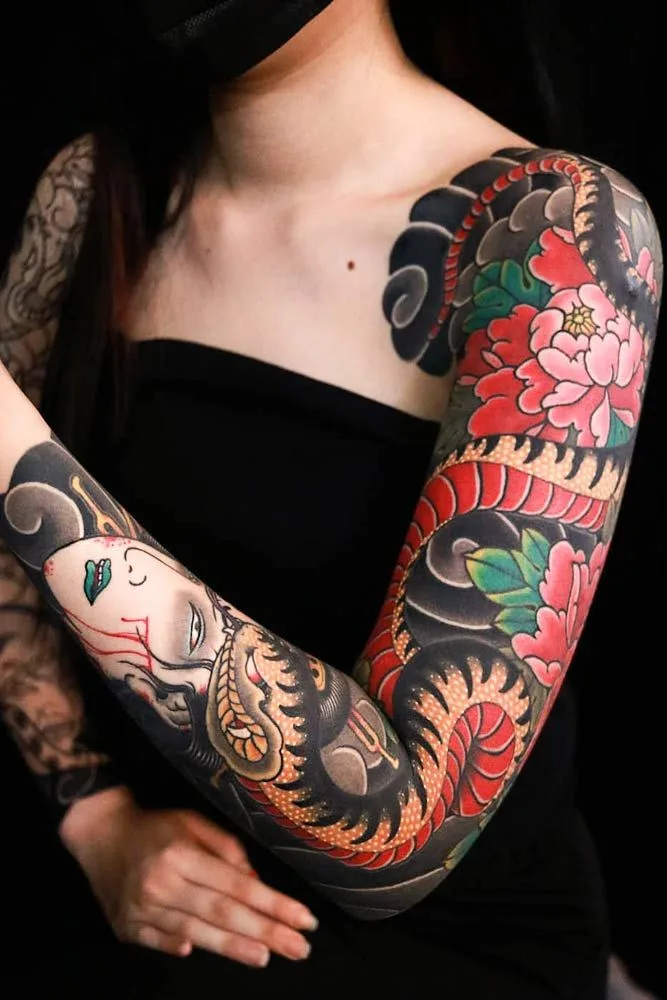
Spiritual Connections
Spirituality is deeply ingrained in Japanese society, which is why many tattoo designs incorporate spiritual symbols with profound meanings. The lotus flower is an excellent example; it represents purity despite growing in muddy waters, signifying enlightenment rising from difficult circumstances. Another powerful symbol is the dragon—often depicted as a guardian or protector—which embodies strength, wisdom, and good fortune.
Cultural Heritage
Japanese tattoos also pay homage to Japan’s rich cultural heritage by incorporating traditional motifs such as samurai warriors or geisha figures.
Frequently Asked Questions
Are Traditional Japanese Tattoos Painful to Get?
Traditional Japanese tattoos, also known as irezumi, can be quite painful to get. The process involves using a manual hand-poking technique called tebori, where the tattoo artist uses a metal or bamboo rod with multiple needles to handcraft intricate designs on the skin. This method can be more painful compared to modern tattooing techniques that use electric machines. However, pain tolerance varies from person to person, so what might be uncomfortable for one individual may not be as intense for another.
Can Women Wear Full-Body Irezumi Tattoos?
Yes, women can certainly wear full-body irezumi tattoos if they choose to do so. Traditionally, these elaborate and extensive tattoos were predominantly worn by men in Japan. However, in recent years, there has been a shift in societal norms and acceptance towards women getting full-body tattoos. Many women now proudly display their irezumi artwork as a form of self-expression and embrace this ancient art form.
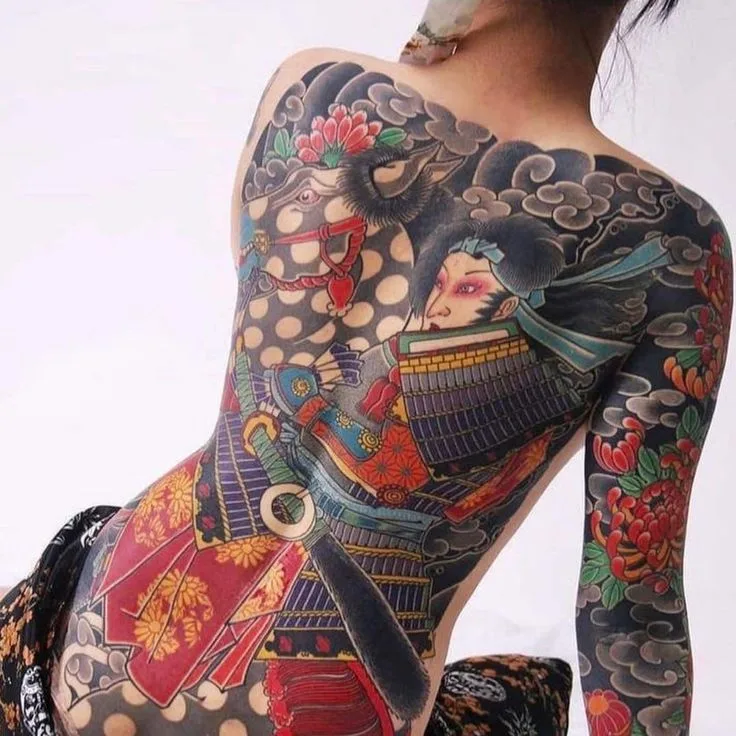
It is important to note that while attitudes towards women with full-body tattoos have become more accepting, there may still be some cultural contexts where certain establishments or individuals might hold different opinions. It’s always advisable to consider the environment you are in and respect any specific rules or guidelines that may exist.
Are There Any Specific Rules or Etiquette Associated with Getting a Japanese Tattoo?
Yes, there are specific rules and etiquette associated with getting a Japanese tattoo. In Japan, irezumi is deeply rooted in tradition and holds cultural significance. When considering getting a traditional Japanese tattoo, it is essential to approach it with respect and understanding.
One important aspect of getting a Japanese tattoo is finding an experienced and skilled artist who specializes in this style of tattooing.
Tattoos, Teenagers and Coming of Age: How Japanese Tattoos Mark Important Milestones
Japanese tattoos have a rich cultural history and have long been associated with rites of passage for young adults. These tattoos serve as visual markers to signify the transition into adulthood or the achievement of specific goals. In modern times, however, some teenagers opt for smaller-scale tattoos that reflect their interests.
Japanese Tattoos: Rites of Passage
In traditional Japanese culture, tattoos were often used to mark important milestones in a person’s life. These intricate designs were typically reserved for individuals who had reached a certain age or completed specific rituals. The process of receiving a tattoo was seen as a significant event, symbolizing maturity and responsibility.
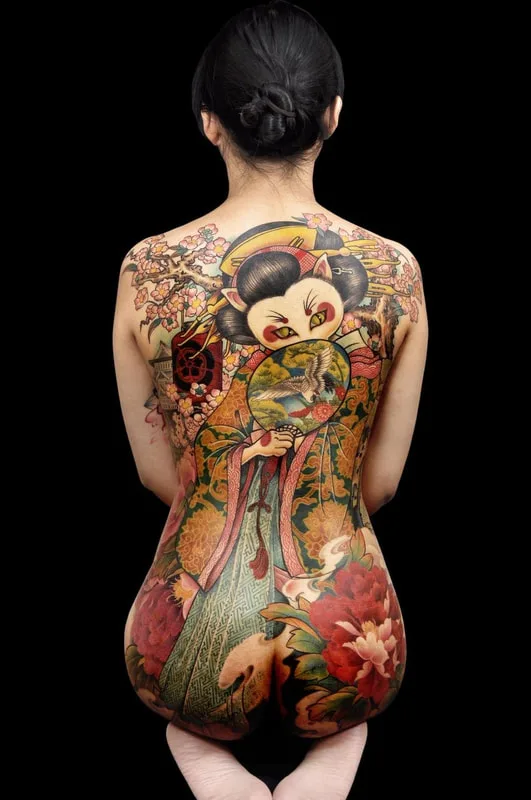
Visual Markers of Adulthood
Japanese tattoos served as visible symbols that someone had entered adulthood. They were not only decorative but also carried deep cultural and personal meanings. These tattoos often depicted traditional motifs such as dragons, phoenixes, cherry blossoms, or koi fish, each representing different virtues or aspirations.
Achieving Specific Goals
Apart from signifying coming of age, Japanese tattoos were also used to commemorate achievements or goals accomplished by individuals. For example, warriors would receive tattoos to honor their bravery in battle or display their allegiance to a particular clan. This practice highlighted the importance of personal accomplishments and celebrated one’s dedication and commitment.
Modern Interpretations
In recent years, there has been a shift in how teenagers approach getting tattooed. While some still choose to follow traditional practices and get larger-scale tattoos that hold cultural significance, others opt for smaller designs that reflect their personal interests or hobbies. These modern interpretations allow teenagers to express themselves creatively while still acknowledging the historical roots of Japanese tattooing.
Expressing Individuality
Smaller-scale Japanese-inspired tattoos have become increasingly popular among teenagers due to their ability to convey individuality and uniqueness.
Infographic: Things To Discuss With The Artist Before Getting Your First Tattoo
Design Ideas and Desired Meaning
When getting your first tattoo, it’s essential to discuss your design ideas with the artist. Make sure that they align with the meaning you want to convey. Whether it’s a Japanese-inspired tattoo or any other style, expressing your vision will help the artist bring it to life.
Placement Options and Personal Preferences
Another important aspect to discuss is the placement of your tattoo. Consider both visibility and personal preferences when deciding where to ink your body art. Do you want it on a prominent area like your arm or leg? Or would you prefer a more discreet location like your back or shoulder? Talk it out with the artist.
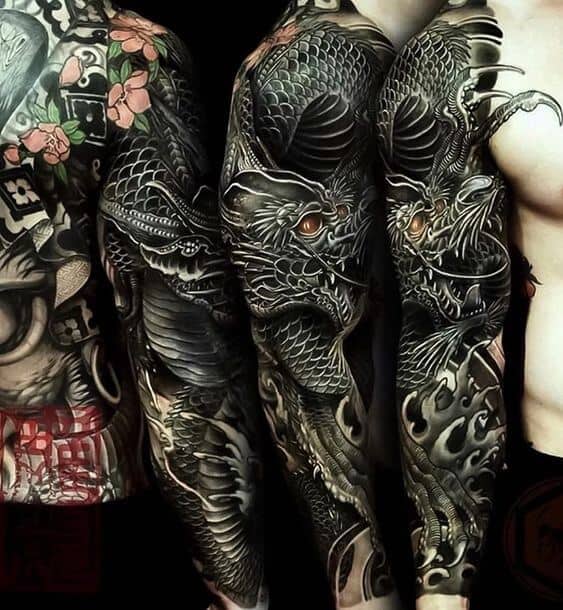
Experience with Japanese-Inspired Designs
If you’re interested in a Japanese-inspired tattoo, inquire about the artist’s experience in this specific style. Different artists have different specialties, so finding someone who has expertise in creating authentic Japanese designs can make a significant difference in the outcome of your tattoo.
Discussing these aspects before getting inked ensures that both you and the artist are on the same page. It allows for collaboration and helps create a meaningful piece of body art that reflects your personality and desires.
During these discussions, don’t be afraid to ask questions or seek clarification. It’s crucial to have open communication with the artist so that they understand exactly what you’re looking for in terms of design, symbolism, and overall aesthetic.
Remember that tattoos are permanent, so taking the time to find an experienced artist who shares your vision is vital. Look at their portfolio beforehand to see if their previous work aligns with what you have in mind.
Once you’ve discussed all these important factors, take some time to reflect on everything before making a final decision. Getting a tattoo is an exciting step but rushing into it without careful consideration may lead to regrets later on.
Motifs & Subject Matter
Japanese inspired tattoos are known for their unique and captivating motifs. These tattoos often incorporate a variety of symbols and imagery that hold significant meaning in Japanese culture. Let’s explore some of the common motifs and subject matter found in Japanese tattoo art.
Motifs commonly found in Japanese tattoo art
Japanese tattoo art is renowned for its intricate and detailed designs. Some of the most popular motifs include:
- Dragons: In Japanese mythology, dragons symbolize power, strength, and wisdom. These mythical creatures are often depicted with vibrant colors and elaborate details.
- Cherry Blossoms: Known as “sakura” in Japan, cherry blossoms represent beauty, transience, and the fleeting nature of life. They are often associated with springtime and renewal.
- Geisha: Geishas are traditional female entertainers who are skilled in various arts such as music, dance, and tea ceremonies. They embody grace, elegance, and femininity.
- Waves: Waves hold deep symbolism in Japanese culture as they represent strength, resilience, and the constant ebb and flow of life. They can also symbolize a connection to nature or a sense of adventure.
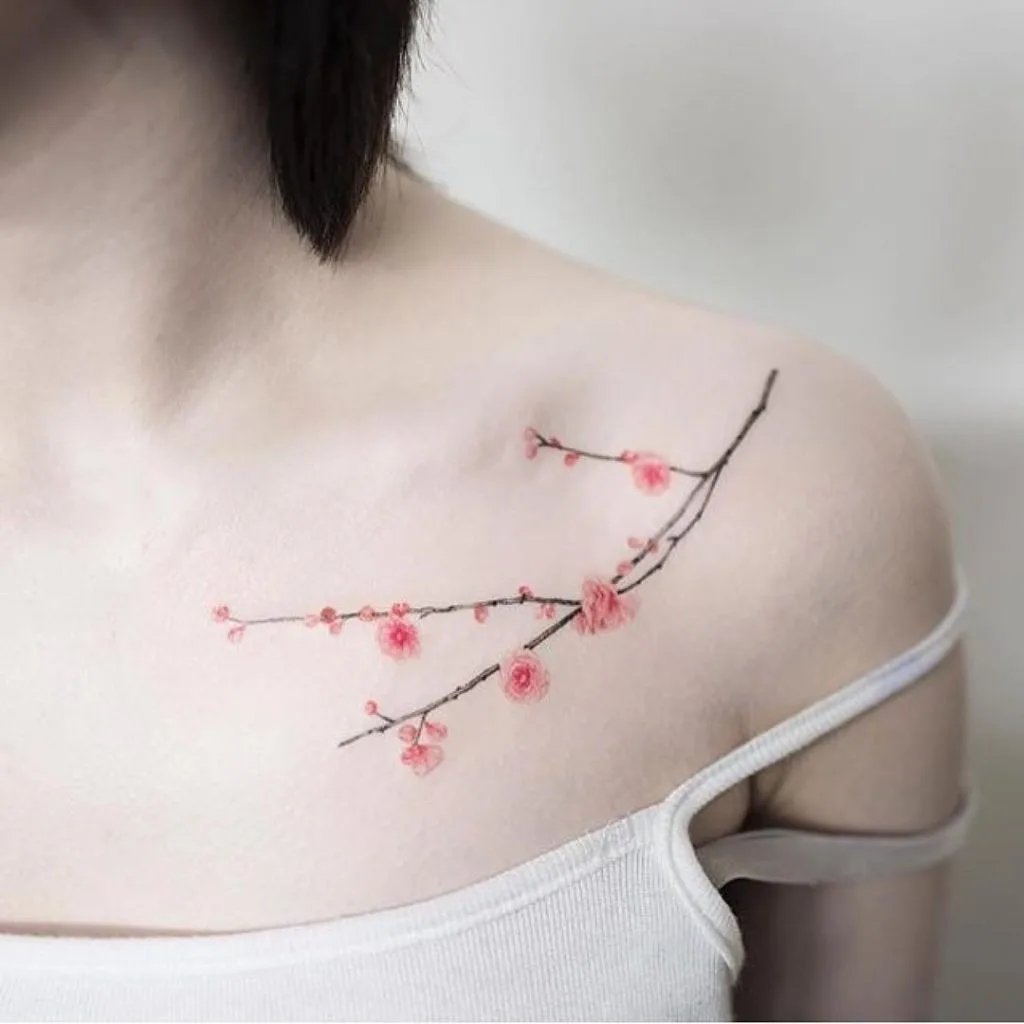
Subject matter in Japanese tattoo art
The subject matter of Japanese-inspired tattoos is incredibly diverse, ranging from mythical creatures to historical figures or natural elements. Here are some examples:
- Mythical Creatures: Alongside dragons, other mythical creatures like phoenixes or kirin (a mythical creature resembling a deer) can be found in Japanese tattoo art. These creatures carry symbolic meanings such as rebirth or protection.
- Historical Figures: Tattoo artists may depict famous historical figures like samurais or emperors to honor Japan’s rich history and heritage.
Tools Used
Tebori: A Traditional Hand-Poking Technique
Japanese tattoo artists have their unique way of creating stunning designs. One of the tools they use is called tebori, a traditional hand-poking technique. With this method, the artist uses a handheld tool to manually insert ink into the skin. It requires immense skill and precision to ensure that each line and detail comes out perfectly.
Traditional Tattooing Instruments
In addition to tebori, Japanese tattoo artists also utilize traditional tattooing instruments. These instruments consist of metal needles attached to wooden handles. The artist carefully dips the needles into ink and then uses them to create intricate designs on the skin. This meticulous process allows for complete control over every stroke, resulting in breathtaking tattoos.
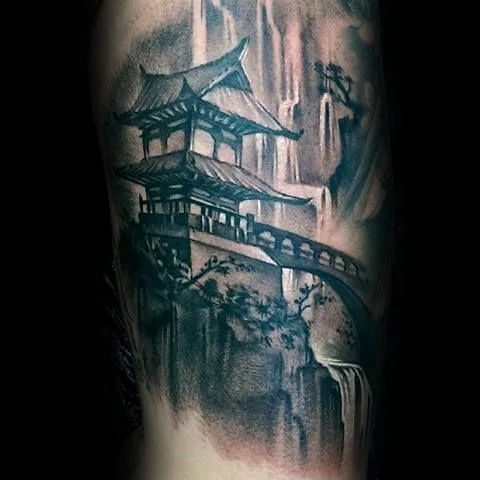
Modern Tattoo Machines
While traditional tools are still widely used, modern tattoo machines have also made their way into Japanese-inspired tattoo artistry. These machines provide a more efficient way of creating intricate designs with speed and precision. They use an electric motor to move the needle rapidly in and out of the skin, allowing for greater accuracy and faster completion times.
The use of these different tools depends on various factors such as the artist’s preference, the complexity of the design, and the client’s comfort level. Some artists may choose to exclusively work with tebori or traditional instruments for a more authentic experience, while others may opt for modern machines for efficiency.
Japanese-inspired tattoos often incorporate a wide range of symbols, images, colors, and styles. From majestic dragons and serene cherry blossoms to powerful wind bars (Fūjin) and protective masks (Hannya), these tattoos are filled with rich symbolism that reflects Japanese culture and mythology.
Each symbol holds its own meaning and significance, making it essential for both the artist and client to understand their choices fully. For example, wind bars represent strength while cherry blossoms symbolize beauty and transience.
Wrap Up!
Japanese-Inspired Tattoos: A Fusion of Art and Culture
Japanese-inspired tattoos have gained immense popularity for their unique blend of artistic expression and cultural significance. These tattoos go beyond mere decorative body art, carrying deep meanings that resonate with individuals on a personal level. Whether you opt for a traditional irezumi design or a contemporary twist, Japanese tattoos continue to captivate people worldwide.
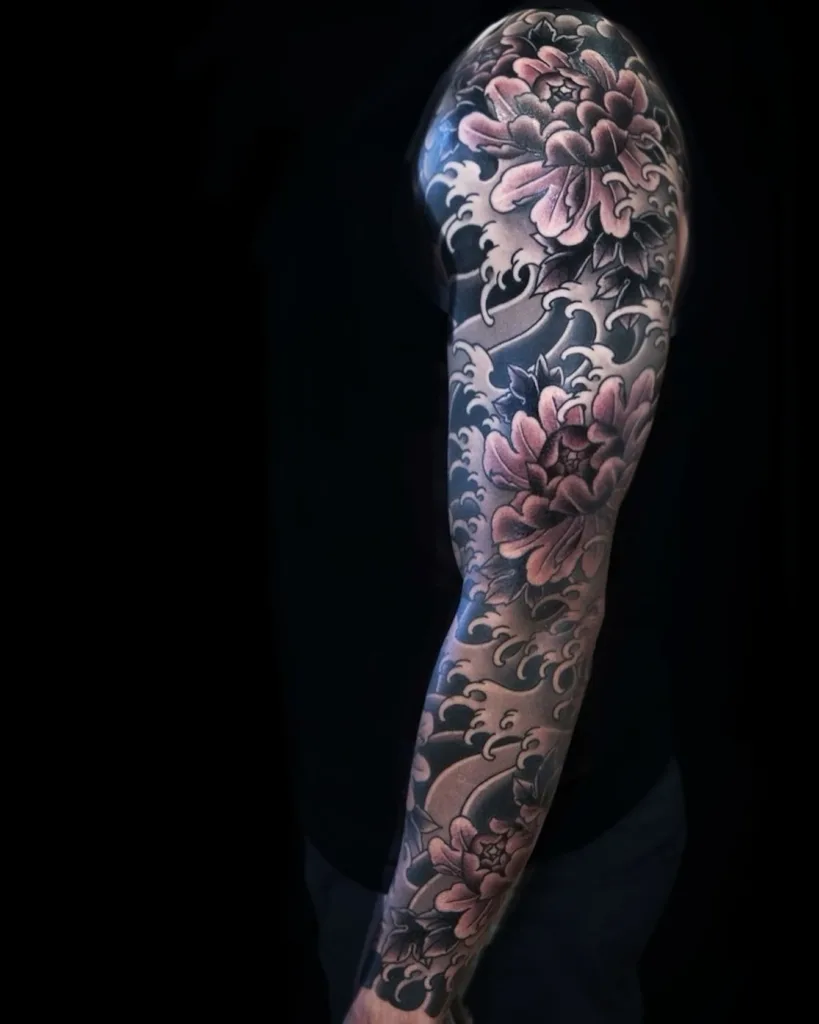
The Power of Symbolism
One of the defining features of Japanese-inspired tattoos is the rich symbolism they embody. Each element within these designs holds profound meaning, allowing individuals to express their beliefs, values, and experiences through inked masterpieces. For example, the koi fish represents strength and determination, while cherry blossoms symbolize beauty and transience. By carefully selecting symbols that hold personal significance, individuals can create a tattoo that tells their unique story.
Cultural Significance
Japanese culture has a long-standing tradition of tattooing known as irezumi. Historically associated with criminals and outcasts, today it has evolved into an art form celebrated for its intricate designs and cultural heritage. Many people choose Japanese-inspired tattoos to pay homage to this storied tradition or connect with their own ancestral roots. These tattoos serve as visual representations of respect for Japanese culture and are often seen as a way to honor its history.
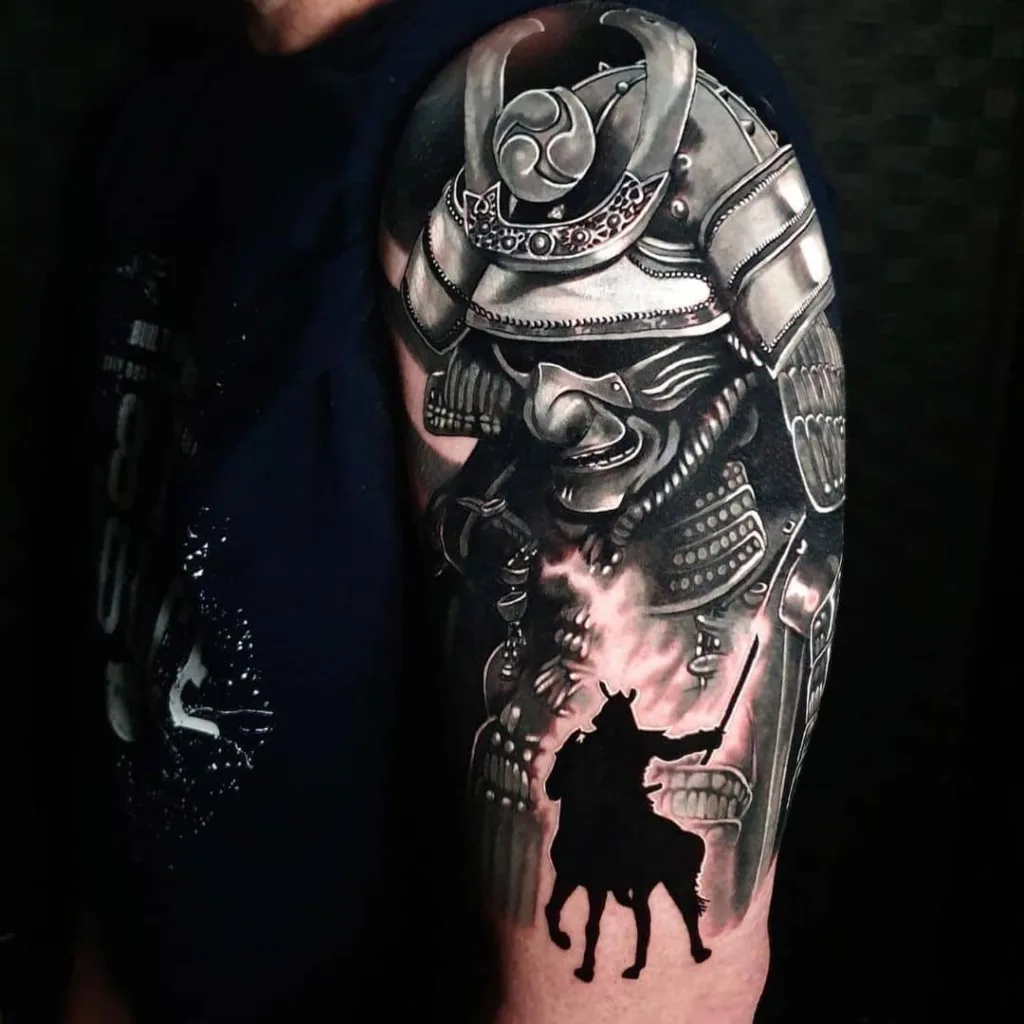
Embracing Good Luck
Incorporating symbols associated with good luck is another popular aspect of Japanese-inspired tattoos. From lucky animals like dragons and turtles to protective amulets such as the Hamsa hand or Maneki-neko (beckoning cat), these tattoos are believed to bring positive energy into one’s life. People often seek out these designs in hopes of attracting good fortune or warding off negative influences.
The Beauty in Nature
Nature plays a significant role in Japanese aesthetics, which is reflected in many tattoo designs inspired by the country’s landscapes.
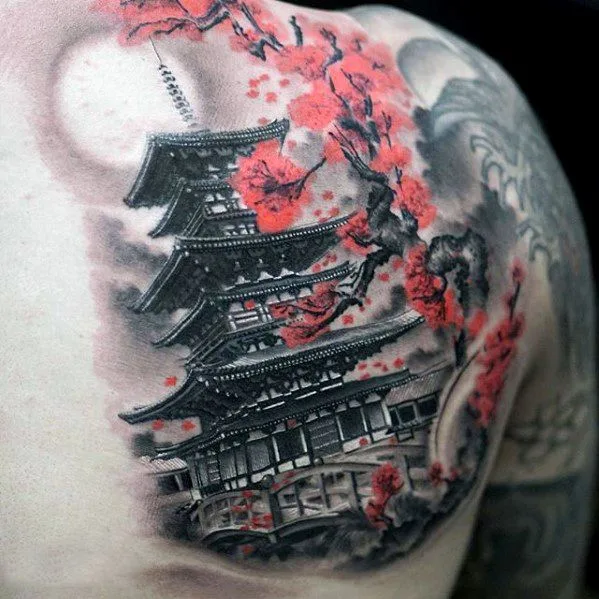
Conclusion
In conclusion, Japanese-inspired tattoos offer a rich and diverse range of designs that hold deep cultural significance. From traditional motifs like dragons and koi fish to modern interpretations of samurai warriors and cats, these tattoos provide a unique way for individuals to express themselves and connect with Japanese history and symbolism. The hidden meanings behind these tattoos add an extra layer of depth, making them not only visually stunning but also thought-provoking.
For those considering getting a Japanese-inspired tattoo, it is essential to research the design, understand its cultural context, and find a skilled artist who can bring your vision to life. Discussing your ideas and expectations with the artist beforehand is crucial to ensure that the final result aligns with your vision. Taking into account the significance of Japanese tattoos in marking important milestones can further enhance the personal meaning behind your chosen design.
FAQs
What are Japanese inspired tattoos?
Japanese inspired tattoos are designs that draw inspiration from traditional Japanese art and culture. These tattoos often feature elements such as koi fish, cherry blossoms, dragons, geishas, samurais, and kanji characters. They are known for their bold lines, vibrant colors, and intricate details.
Are Japanese inspired tattoos culturally appropriate?
Cultural appropriation is a complex topic. While some argue that wearing Japanese inspired tattoos can be seen as cultural appreciation, it’s important to approach it with respect and understanding. Researching the meaning behind the design and consulting with a knowledgeable tattoo artist can help ensure cultural sensitivity.
Is it necessary to understand the symbolism behind Japanese inspired tattoos?
Understanding the symbolism behind Japanese inspired tattoos adds depth to the design and enhances its significance. Each element holds specific meanings in Japanese culture. Taking the time to learn about these symbols can help create a more meaningful tattoo that accurately represents your intentions.
How should I choose a reputable tattoo artist for my Japanese inspired tattoo?
When selecting a tattoo artist for your Japanese inspired tattoo, consider their experience and portfolio specifically related to this style. Look for artists who have a strong understanding of traditional Japanese art techniques and can demonstrate their ability to execute intricate designs with precision.
What aftercare steps should I follow for my newly inked Japanese inspired tattoo?
Proper aftercare is crucial for ensuring the longevity and vibrancy of your new Japanese inspired tattoo. Follow your tattoo artist’s instructions carefully, which may include keeping the area clean, applying ointment or moisturizer as directed, avoiding direct sunlight or soaking in water during